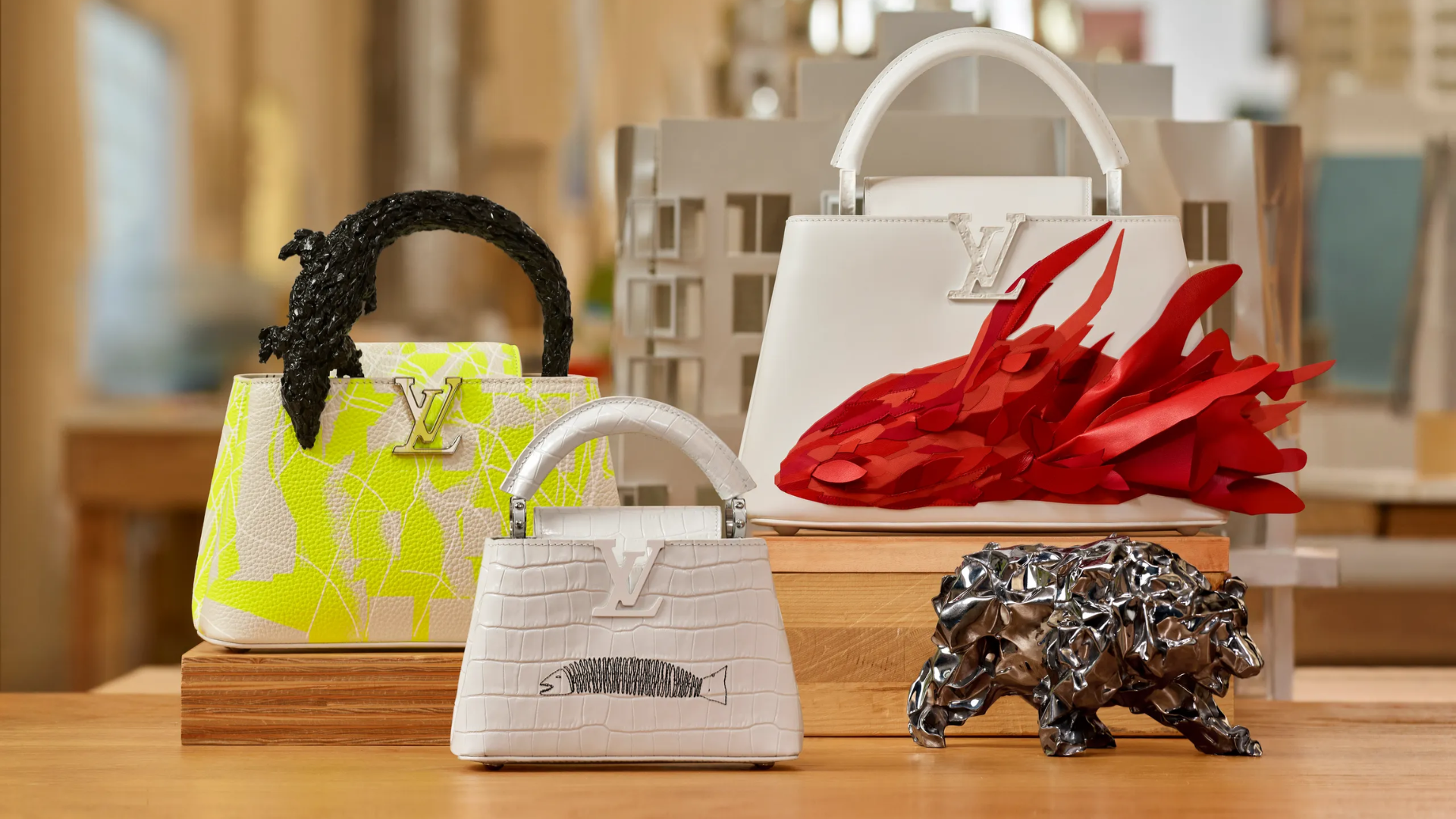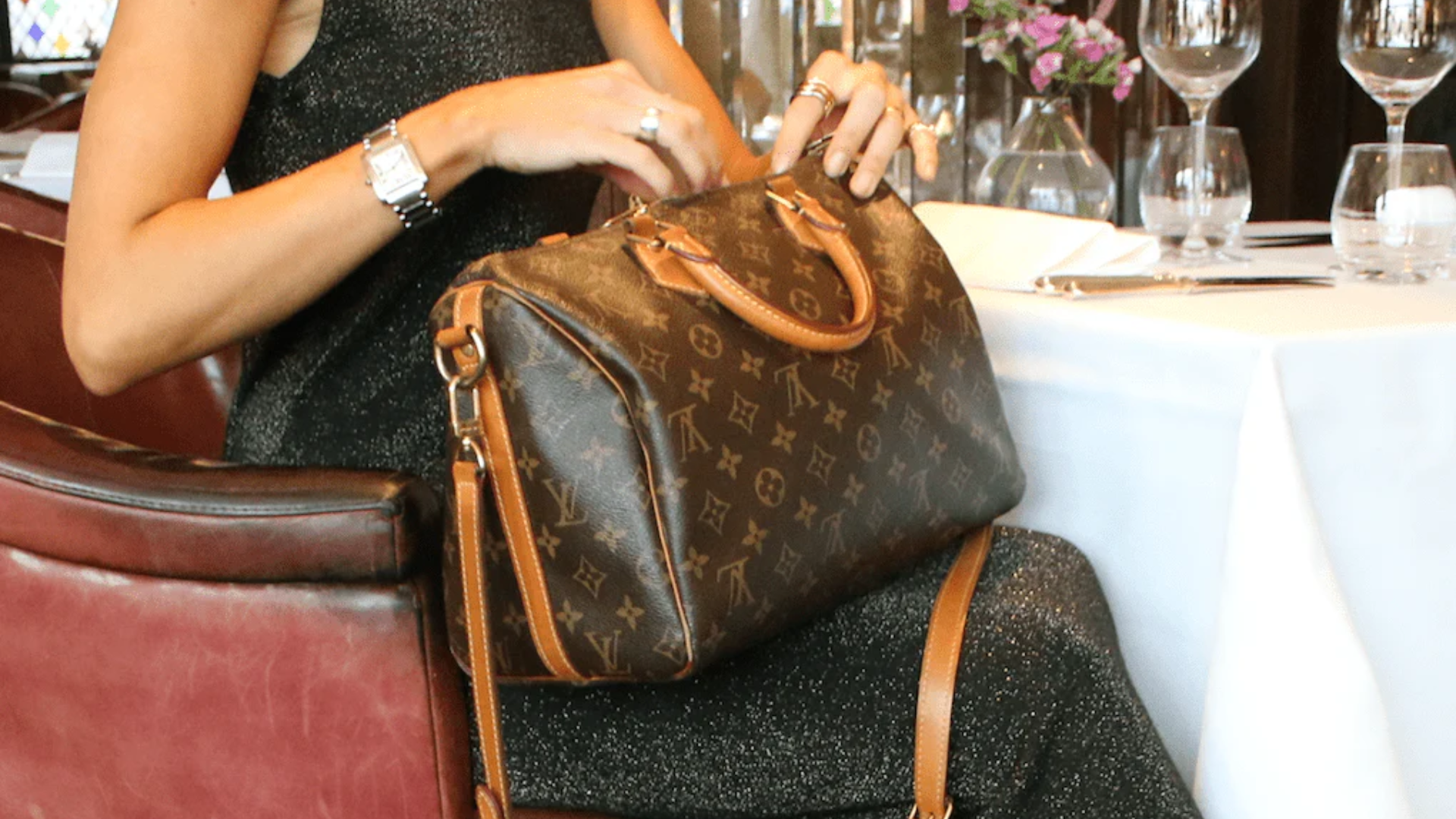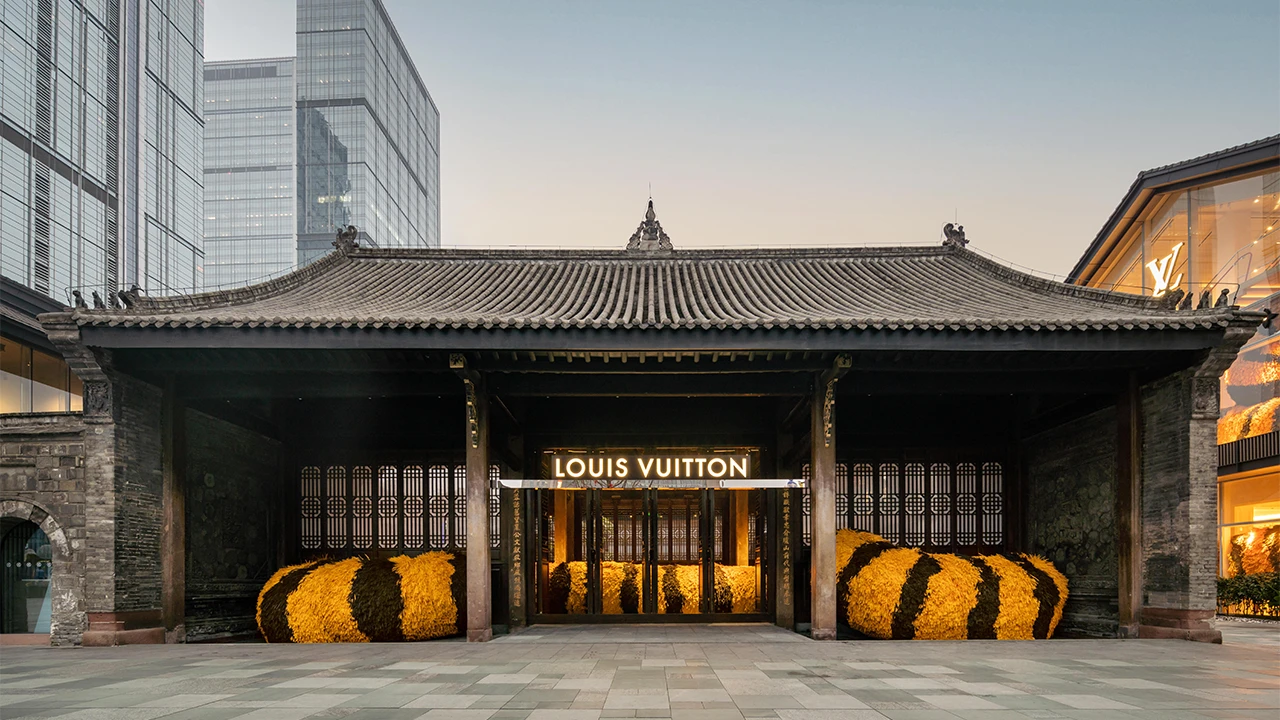
Style Companion
Louis Vuitton at Walmart: The End of Luxury as We Knew It
by Thea Elle | June 30, 2025 | Luxury Industrial Complex
It’s official: luxury has left the building. It’s now sitting quietly in your Walmart shopping cart between a Crock-Pot and a value pack of paper towels. The world’s biggest retailer—famous for rollback pricing and cavernous aisles lit like interrogation rooms—now sells $6,000 Louis Vuitton handbags online. This isn’t a bold experiment. It’s the inevitable endpoint of a decades-long identity crisis in luxury fashion, one Dana Thomas diagnosed back in Deluxe: How Luxury Lost Its Luster (2007). Heritage houses once anchored in craftsmanship and scarcity were swallowed by conglomerates like LVMH, Kering, and Richemont. They traded artisanship for scale, rolling out entry-level perfumes and logo belts to entice aspirational shoppers. The result? A system that prizes volume over soul. Walmart didn’t break luxury. It just held up a fluorescent-lit mirror to what it has become.

Luxury Without the Ritual
Once upon a time, buying a Louis Vuitton bag wasn’t just a transaction. It was an initiation. You stepped off the street and into a hushed temple of consumption, where the air smelled faintly of leather and luxury perfume. Polished brass fixtures gleamed under soft lighting, glass vitrines displayed monogrammed treasures like museum artifacts, and sales associates in tailored uniforms spoke in tones just above a whisper. You weren’t a customer—you were a guest, gently shepherded into a narrative of heritage, craftsmanship, and exclusivity. Even the simplest purchase was ritualized. A glass of chilled Perrier here, a discreet nod there, your chosen item wrapped in layers of tissue and tied with a satin ribbon like a sacred offering. Fast forward to now. That same Louis Vuitton bag sits one click away on Walmart.com, nestled between bulk packs of dish soap and discounted Crock-Pots. You can toss it into your cart alongside lawn fertilizer and a Paw Patrol birthday cake, then check out with free two-day shipping. No hushed lighting. No attentive staff. No storytelling. Just a thumbnail image, a price tag, and an “Add to Cart” button.
For Walmart, the strategy is obvious. In a world ruled by Amazon, Rakuten, and endless e-marketplaces, it wants to be the ultimate one-stop shop—everything from bananas to Birkin bags under one digital roof. To its credit, Walmart has successfully turned scale into an art form. But for Louis Vuitton, this partnership is a high-stakes gamble with its own mythology. Luxury was never meant to mingle with the mundane. When a Speedy Nano shares a page with garden mulch and toaster ovens, it doesn’t whisper status—it shouts commodification. Online marketplaces may offer infinite shelf space, but they also flatten context. They erase the carefully constructed worlds luxury brands spent decades building. A LOUIS VUITTON bag isn’t framed by marble floors and curated playlists anymore. It’s framed by “Customers Also Bought” recommendations for air fryers and weed killer. Prestige, as it turns out, doesn’t survive in the scroll.

From temple to two-day shipping: The LV monogram, once a passport to rarefied worlds, now just another item in the endless scroll.
The Myth of Scarcity
Luxury has never really been about leather or silk or gold. It has always been about scarcity—an idea as carefully constructed as any monogram. Not just scarcity in numbers, but scarcity in feeling. A $6,000 LOUIS VUITTON bag didn’t merely signal exquisite craftsmanship. It signaled distance, an untouchable aura, the sense that you were buying access to a world that most people could only glimpse through shop windows or glossy magazine ads. To carry one was to announce you’d arrived—not at the mall, but at a level of existence just beyond the reach of the everyday. Now? That same monogrammed bag sits a click away from free two-day shipping, nestled between paper towels and pool floats. No hushed lighting. No white-gloved associates. No carefully choreographed performance of prestige. Just an “Add to Cart” button and the jarring reality that your exclusive purchase can be delivered alongside a pack of dryer sheets. This isn’t democratization. It’s dilution.
Dana Thomas warned us about this almost two decades ago in Deluxe: How Luxury Lost Its Luster. The luxury conglomerates—LVMH, KERING, RICHEMONT—engineered their own undoing in their quest for global domination. They made luxury a scalable product rather than an unrepeatable experience. Scarcity shifted from an ethos to a tactic. Limited runs, “exclusive” collabs, gated flagships with velvet ropes—all designed to preserve the illusion of rarity even as production and distribution ballooned. But illusions only hold if you keep the machinery hidden. The moment luxury brands embraced mass retail footprints and e-commerce ubiquity, the magic began to seep out. A bag you can buy while lying in bed at 3 AM on Walmart.com doesn’t feel rare. It feels algorithmic.
Once a symbol of legacy and labor, now a SKU in the scroll as heritage meets the algorithm.

When Luxury Becomes a Logo
The damage isn’t just logistical. It’s emotional. Once, luxury was defined by its reverence for process—the hours of hand-stitching, the centuries of savoir-faire, the artisans whose skills were passed down like family heirlooms. To hold a LOUIS VUITTON trunk or an HERMÈS Kelly was to hold a story, a lineage, a piece of human effort rendered flawless. Now? Those stories feel airbrushed out, replaced by algorithmic optimization and quarterly growth targets. A LOUIS VUITTON bag may still bear the LV monogram, but when it appears on Walmart’s digital shelves, sandwiched between patio furniture and protein powder, it no longer reads as sacred. It reads as a SKU—another product in an infinite scroll, its value flattened by the very convenience that makes it so easy to buy.
This is the logical endpoint of luxury-as-business-model. When conglomerates began chasing scale, they traded their souls for spreadsheets. Craftsmanship became secondary to branding. Identity became flexible, stretched thin across perfumes, keychains, sneakers, and now, a clickable thumbnail. The irony is that the monogram, once a badge of exclusivity, now functions as little more than a visual asset—a globally recognized logo optimized for Instagram grids and TikTok hauls. The luxury houses still speak in the language of atelier and artisan, but their actions tell a different story. When the ritual of luxury is reduced to a one-click transaction, the narrative collapses. This shift is not just about where you can buy a Louis Vuitton bag; it’s about what that bag means. Without the hushed boutiques and curated experiences, without the human touch and the sense of occasion, the object becomes untethered from its heritage. The sad truth? For many conglomerates, this was always the plan. In pursuit of endless expansion, they turned luxury into a numbers game. And numbers have no time for nuance.

The analog care of a boutique contrasts sharply with the digital convenience of a mass retailer.
Walmart Didn’t Kill Luxury. Luxury Did.
It’s tempting to cast Walmart as the villain in luxury’s cultural comedown—the big-box behemoth that trampled over centuries of artisanal tradition. But let’s be honest: the fashion houses got themselves here. This isn’t a hostile takeover. It’s the inevitable result of decades of decisions that traded exclusivity for exposure, craft for convenience, and storytelling for scale. For years, luxury brands have dined out on their own mythology, treating scarcity as just another lever to pull. Limited-edition drops, waitlists engineered for social media clout, and “exclusive” collaborations with fast fashion retailers all blurred the line between luxury and mass market. Scarcity wasn’t sacred anymore—it was a feature to be toggled on and off, depending on the quarter’s revenue targets.
They outsourced heritage to marketing teams, letting PowerPoint decks distill centuries of craftsmanship into bullet points and mood boards. They fed the world’s appetite for logos until even the most discerning shoppers felt full, suffocated by a monogram that once whispered but now shouts from every tote bag and airport lounge. And they pursued global ubiquity at all costs—building flagship stores in every mall from Dubai to Dallas, flooding Instagram with campaigns that traded subtlety for algorithm-friendly spectacle. Now, when a LOUIS VUITTON Speedy bag shows up between garden mulch and Paw Patrol birthday cakes on Walmart.com, the moment feels jarring not because Walmart corrupted luxury, but because luxury hollowed itself out long before. The LV monogram still signals status to some, but for others, it’s beginning to feel like a corporate logo—closer to a Starbucks siren than a symbol of unattainable craftsmanship.

When luxury is everywhere, it becomes just another thing in the cart, more Tide Pod than timeless.
What’s Next for Luxury?
So where does luxury go when anyone can have it? Perhaps the future belongs to niche ateliers who resist scaling, or to immersive experiences that cannot be boxed, shipped, and Prime-tracked. Perhaps luxury pivots away from the object altogether and into pure storytelling—intangible, ephemeral, impossible to screenshot.
Until then, a LOUIS VUITTON Speedy bag will continue sitting next to Tide Pods and slow cookers in digital shopping carts. Once a symbol of arrival, it now risks being mistaken for yet another item in the everything store. In trying to be everywhere, luxury has made itself ordinary.
